
Death Of A Camera
May 18th, 2014
The inevitable has happened. After years of faithful service, my camera has given up the ghost.
At least you can say it died doing what it loved. I was out at South March Conservation Forest today, getting a slew of photos of birds and flowers on an unseasonably frigid but beautiful morning. It was just after I had taken my best picture ever of a particularly gorgeous species of songbird that the shutter gave out.
So there will be those, and there will be more, since I've built up a backlog of unposted Ottawa pics while I've been blogging about Costa Rica. And then that will be all for awhile. Unless the repairs are cheaper than I expect, I'll be buying a new camera body, which probably won't happen until after Christmas.
Scenery for a change
May 17th, 2014
Pretty sunset in Kanata today.
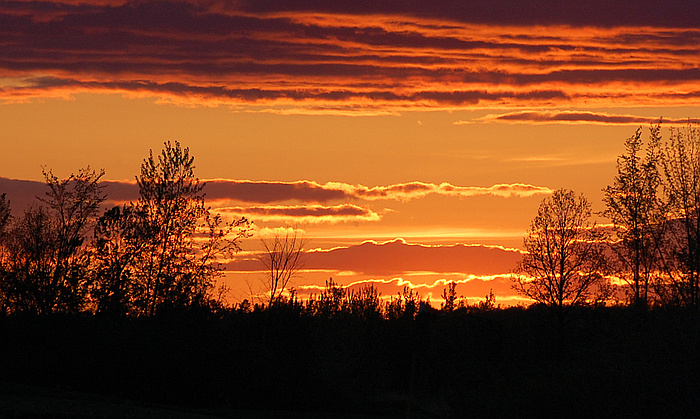
1680x1050 wallpaper
And all the rest...
May 16th, 2014
Some final photos from Costa Rica, followed by my triplist. The permanent home for pictures from this trip will be here.
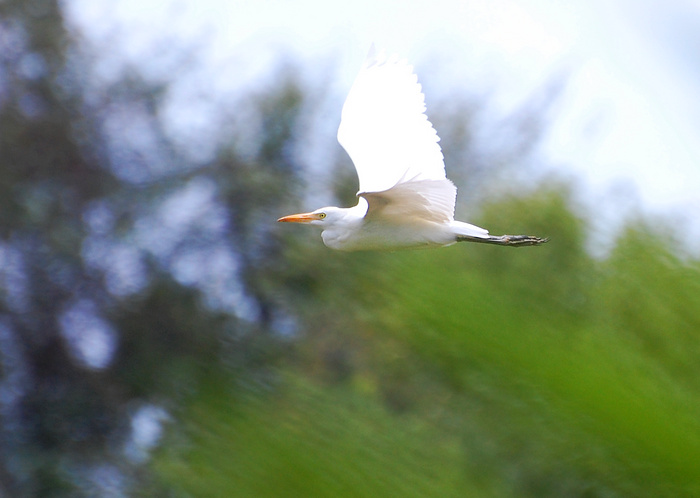
Cattle Egret - wallpaper available
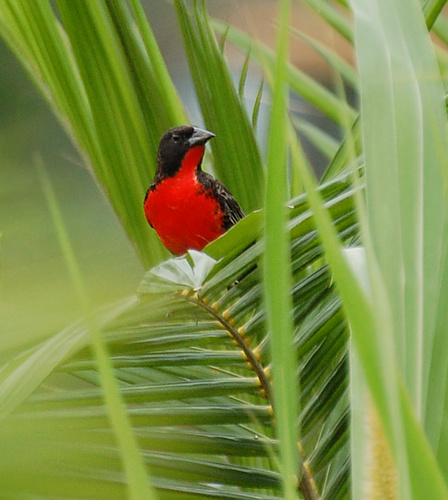
Red-Breasted Blackbird - wallpaper available
A flock of these gorgeous icterids descended on the baby palms one morning while I was out birding. I never saw them after that. Despite the name, they are more closely related to our meadowlarks than to other blackbirds.
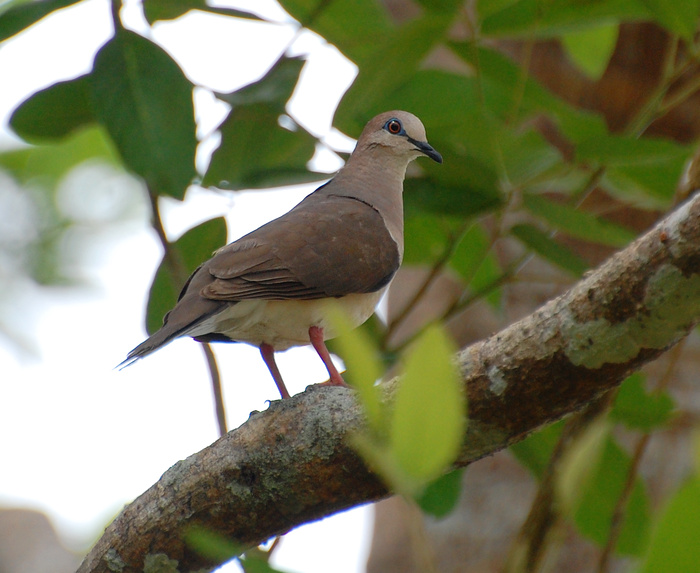
White-Tipped Dove
The blue orbital skin, i.e. the blue around the eye (more visible at high res), is the only reliable way of distinguishing this bird from a Gray-Headed Dove, which has red instead. Interestingly, in areas where Gray-Headed Dove doesn't occur (and thus no confusion could occur), the White-Tipped's orbital skin is red. It's not the only case I've heard where birds seem to have certain features for the sole purpose of telling each other apart. Or maybe they're just helping us bird-watchers out!
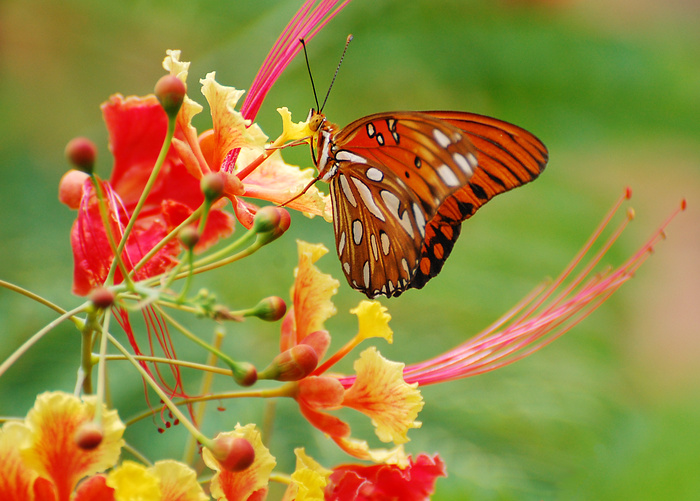
Gulf Fritillary - wallpaper available
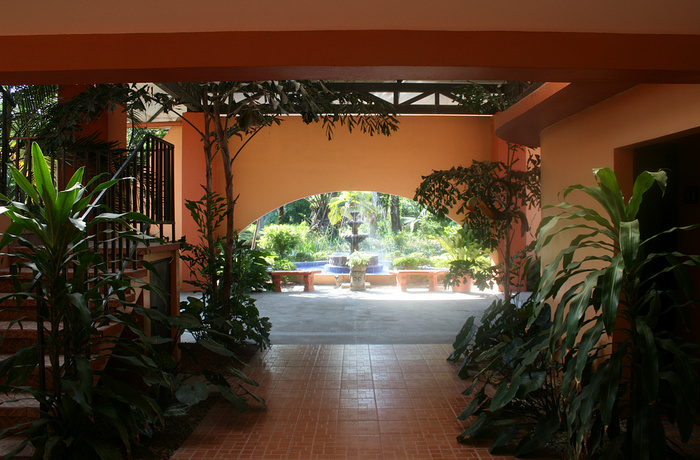
Photo by Michael Britton
The view out to the front garden from our resort. Just looking at this picture makes me nostalgic!
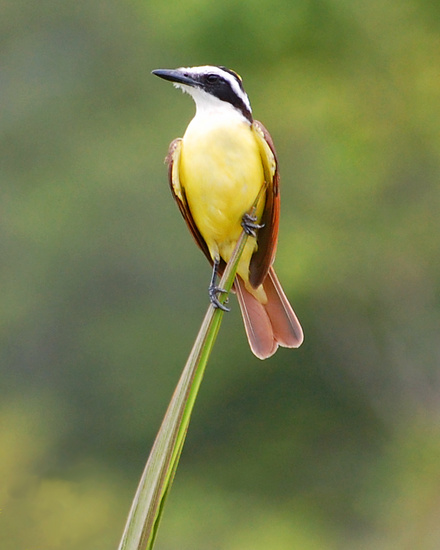
Great Kiskadee - wallpaper available
( More photos and the final triplist )
And now, big damn spider
May 13th, 2014
Our guide called her a Banana Spider. She had built her web behind the shelter at the start of the trail.

1680x1050 wallpaper
Please understand that this is not the wonders of macro photography making a tiny thing (or small thing, or reasonably-sized thing) look huge. I don't have a macro lens. I have a modest-length telephoto lens, and it filled the frame. I have held a tarantula in my hand before, and I think this spider was bigger than the tarantula.
But there's more. See the tiny spider in the web with her? That's not her baby, or some other, much, much smaller species about to become her dinner. That's her mate. That's what a male Banana Spider looks like.

The Rainmaker Tour
May 11th, 2014
On our last day in Costa Rica we went on a tour of Rainmaker, a privately-owned rainforest, organized by our resort and led by Roger. One of my happy early discoveries at Pueblo Real was that two of the men who worked the front desk, Roger and Oscar, were passionate birders. They were professionals, in fact, who led tours and only worked the desk as a side job. Both were very friendly, spoke excellent English, and were ever willing to share their advice and expertise. Oscar even took us birding for free a few times.
Rainmaker was the most tropical experience I had on this vacation. It was all you imagine when you hear the word "rainforest": giant trees, tarzan vines, sweeping vistas. Alas, I decided early on that it would not be a camera day, not with wavy suspension bridges and mandated walking sticks. Mike did decide to use his camera and got a bunch of scenery shots, of which I have a few favorites. As usual, click on any of these for a higher res version.
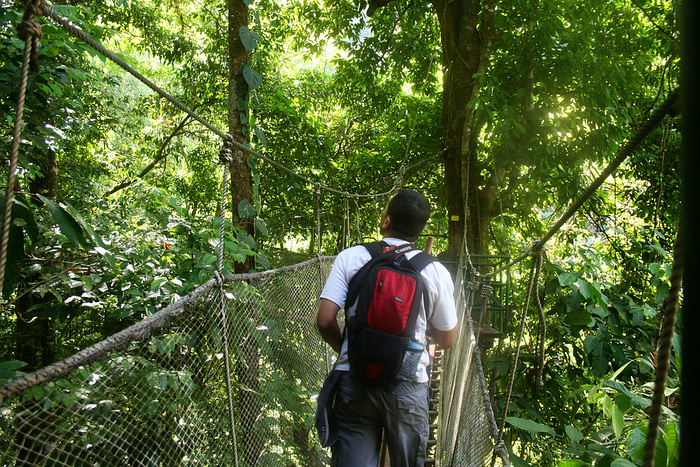
Photo by Michael Britton
Our fearless leader :-)

Photo by Michael Britton
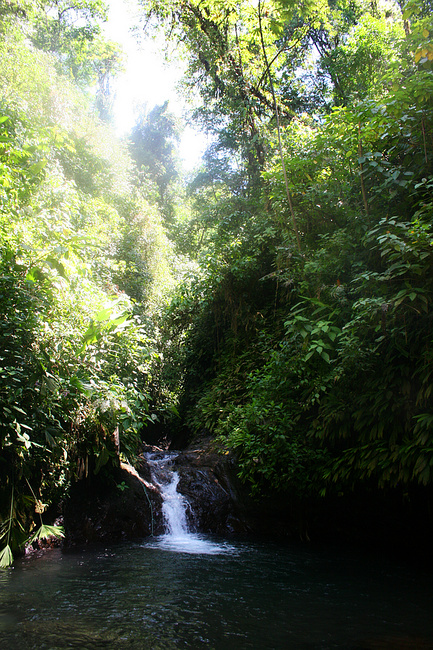
Photo by Michael Britton
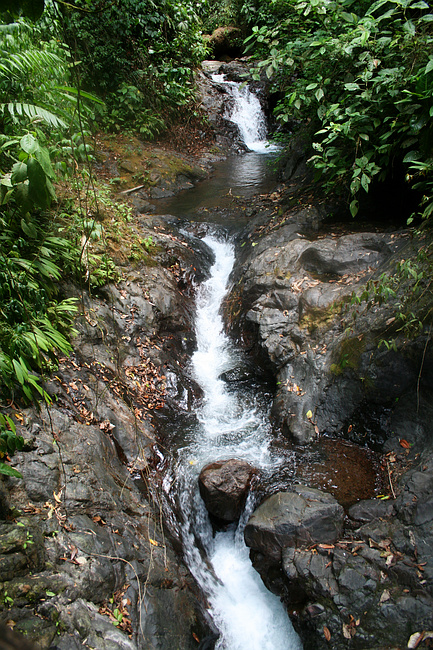
Photo by Michael Britton
As for me, I took photos of just one subject. I'll save those for my next post.
Late morning and it was time for a swim in the pool beneath the waterfall. Except...the birds were calling me. All morning I'd longed to see more of them, but the noise and activity of the two children in the group kept them at bay. So when Roger offered to take me around birding while the rest of the group swam, the waterfall, pristine and inviting though it was, had to be passed up. "Unless you'd like to swim," I said.
Roger replied, and I quote, "pff."
So we went around a bit, not getting too far from the group, and were rewarded with excellent views of a Buff-Rumped Warbler hopping from rock to rock in the stream below the falls. Buff-Rumpeds are "resident" warblers in Costa Rica: they actually live out their lives in the tropics instead of flying to North America to breed. They're always found near flowing water, with a loud, ringing song that can be heard over the roar of a waterfall. I found their habits very similar to those of our own Louisiana Waterthrush (a rare warbler in this area, but it's been known to nest at Lauriault Falls.) Waterthrushes are some of my favorite birds, and I loved Buff-Rumped Warblers as well.
The "good bird" of the day was a Stub-Tailed Spadebill. I am Roger's backup for his claim of having seen one (having seen it also, and pegged it as such independently), since it was believed to have been extirpated from the region!
And the floodgates open
May 9th, 2014
We interrupt your regularly scheduled Costa Rica photo albums to announce that warblers have arrived in Ottawa. Oh. my. god. have they arrived.
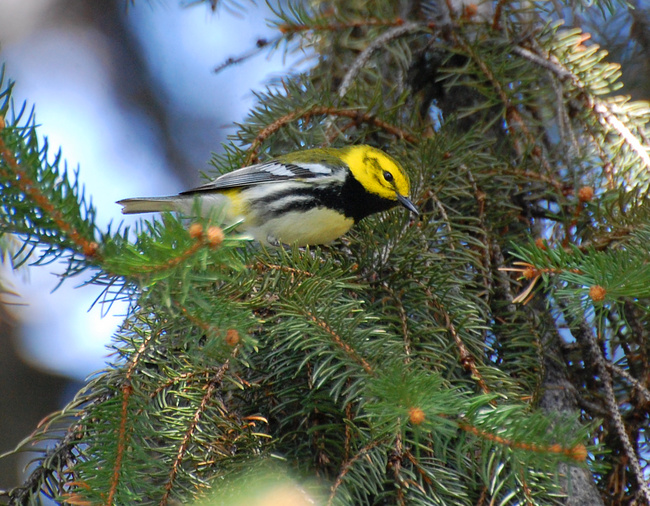
1680x1050 wallpaper
This Black-Throated Green Warbler was practically begging to be photographed. As the guy next to me said, "he certainly seems to think he's important!" These beauties actually nest in our area (Stony Swamp, South March Highlands, Gatineau), but it's hard to see them on their breeding grounds. They tend to stay high up in the trees.
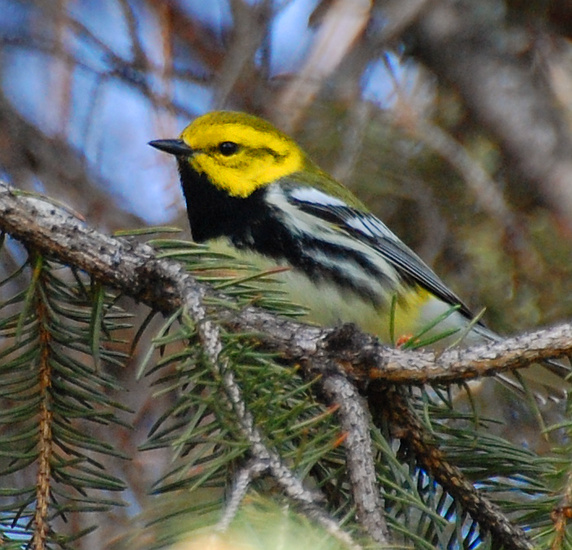
1680x1050 wallpaper
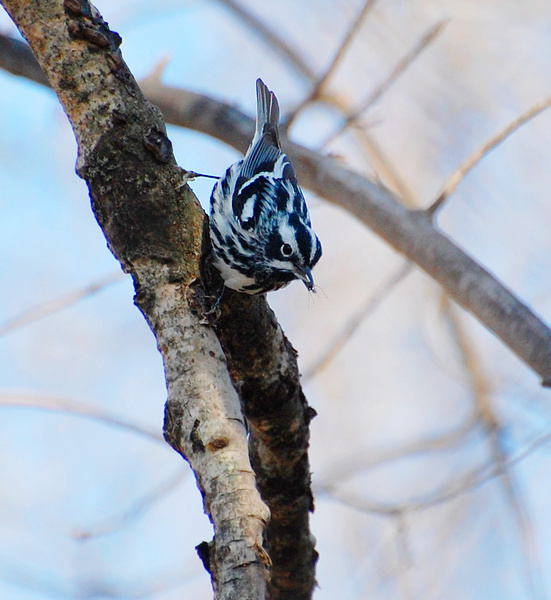
Black-and-White Warbler
Remember this one? I like to fondly imagine that it's the very same Black-and-White Warbler I saw splashing in a creek two months ago in a Costa Rica rainforest.
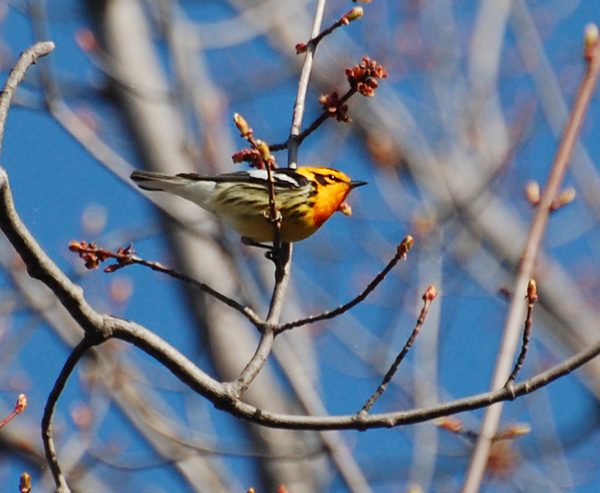
Blackburnian Warbler
My favorite bird in all North America, photographed for the first time. (Not photographed terribly well, I'm afraid, but it's a start!)
This is what the cars look like at Mud Lake, on a weekday morning, when the spring warblers finally get here:


Carara National Park (part 4)
May 6th, 2014
I wasn't above photographing the occasional reptile on a birding tour, either :-)
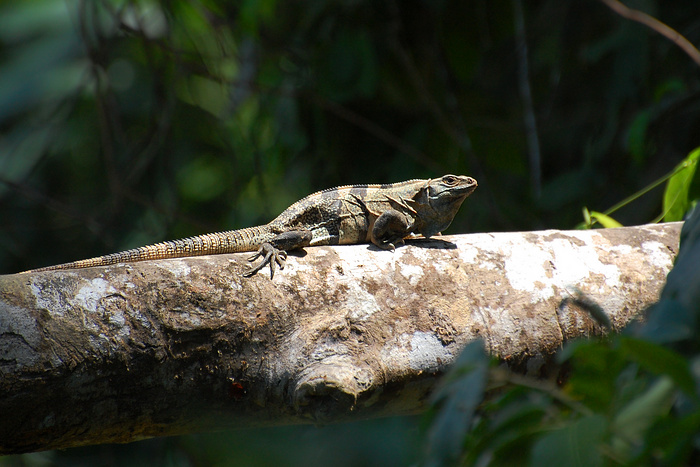
1680x1050 wallpaper
Nor flowers:
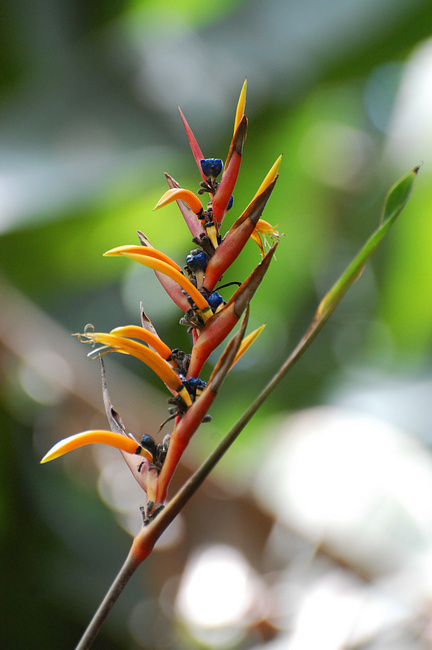
Familiar Turkey Vultures and Black Vultures were ubiquitous in Costa Rica (even on the beach!), but I saw only two King Vultures, both thanks to Johan. The first, my lifer, was in Esquipulas, and was too far away for even a bad picture. Johan spotted this one soaring soon after we came out into the open at the lagoon.
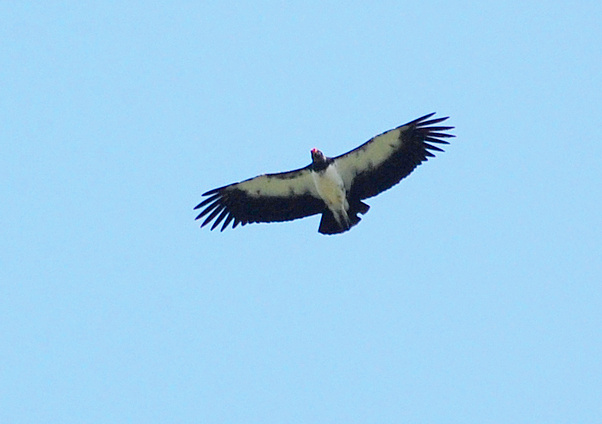
Here's what a King Vulture looks like up close. It's said they're called kings because when they descend to a carcass, other vultures make way. You can kinda see why.
Late in the day, Johan took us to a small creek which is known as a favorite evening bathing spot for a variety of birds, and we stayed there until sunset. This ended up being not only a high point in the Carara trip, but one of the high points of my whole vacation. Photographing it was difficult. The lighting was poor, and my camera wanted tons of exposure time to compensate; I could not possibly hold it steady enough to expose for that length of time without blur. Of course, disturbing the birds with flash was out of the question. I considered fiddling with the ISO setting, and our guide graciously offered to lend me his tripod, but in the end, I decided to just sit and enjoy.
A Red-Capped Manakin was the first to make an appearance. (Red-Capped Manakins, on account of their particular lek dance routine, are called "Michael Jackson birds." They moonwalk. (No, seriously--if you only ever click on one link in my blog, click on this one. You won't regret it.)) Then another, and another still. While one of them was splashing in the water, a Blue-Crowned Manakin perched right over his head--a visceral "wow" moment for both me and Michael. A Black-and-White Warbler (a wintering bird from North America) made an appearance, followed by a Sulphur-Rumped Flycatcher. A Long-Billed Hermit (at six inches, a comparatively enormous hummingbird) zipped in, dipped his tail, and zipped out. A late arrival was a nondescript brown bird called a Thrushlike Schiffornis, which our guide proclaimed to be the best (i.e. rarest) bird of the trip.
The most my camera (and some digital sharpening) could do:
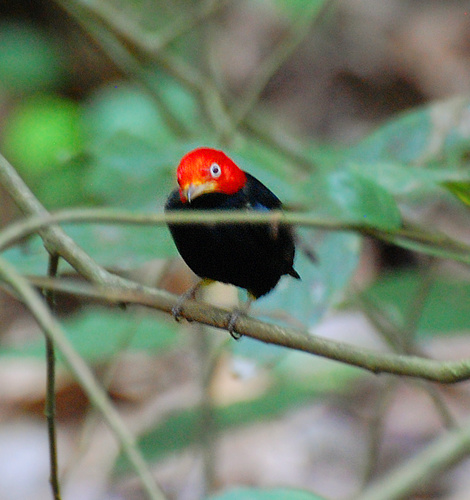
Red-Capped Manakin
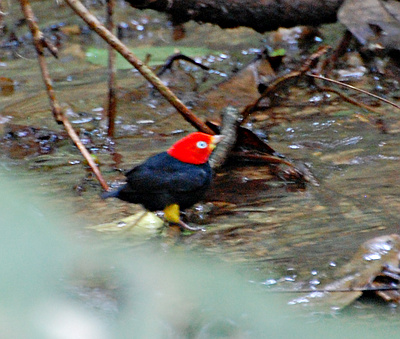
Those things that look like yellow leg warmers are part of the bird. He shows them off when lekking.
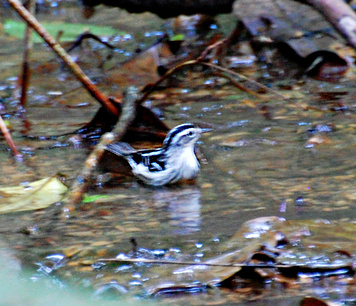
Black-and-White Warbler
When this incredible show was over, alas, Carara was over, and we hurried back down the trail before night set in, accompanied by the lion-like roars of a troop of Howler Monkeys.
Carara National Park (part 3)
May 3rd, 2014
Once we reached the lagoon, I crept along the edge angling for a good photo of the shorebirds and herons. The harsh midday sun made things difficult--as did the wariness of my subjects! This pair of Black-Necked Stilts regarded me sternly, while the young Jacana seemed to wonder what all the fuss was about.
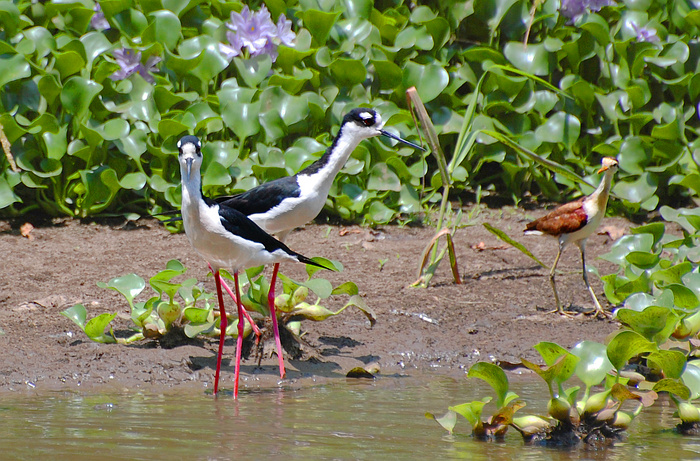
1680x1050 wallpaper

Left to right: Bare-Throated Tiger Heron, Black-Necked Stilts, Tricolored Heron. The young jacana is hiding in here too. Look near a brown leaf to find him.
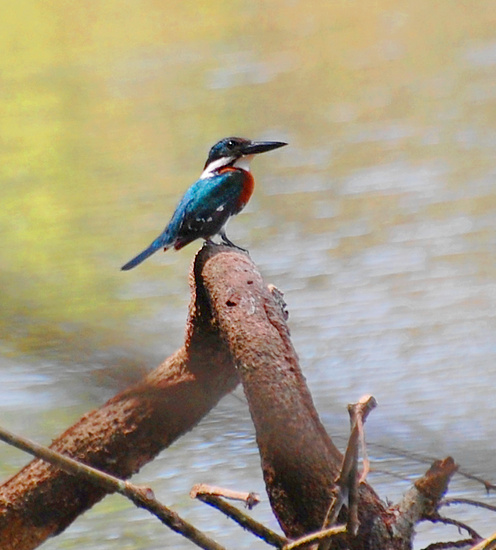
Green Kingfishers were common, as they seemed to be in just about any wetland in Costa Rica. This one looked rather regal in the bright sun.
At the end of the lagoon trail lay a Boat-Billed Heron nesting colony. I'd seen Boat-Billed Herons in my field guide before the trip, and thought they looked a lot like our local Night Herons (to whom they're related.) In person, they looked nothing like Night Herons. They looked like the strangest birds I'd ever seen: like giant-eyed, bulbous-billed muppets. The juveniles were, frankly, ugly, but it was an ugliness you had to love!
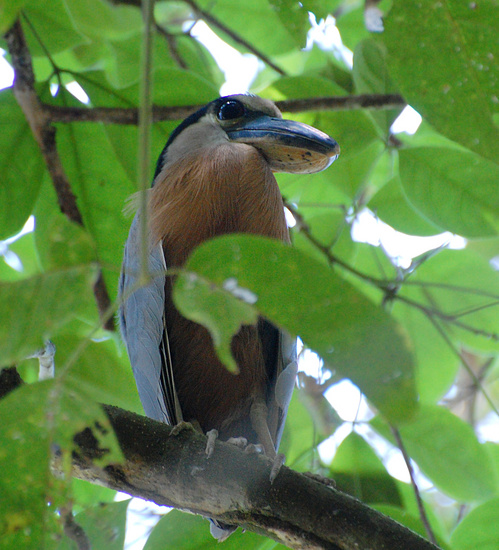
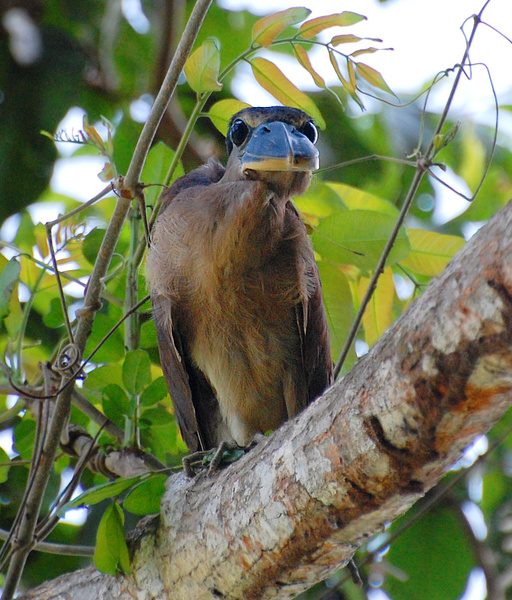
The adults go for a more debonair look, taking on a slightly less bulbous bill and a wavy hairdo.
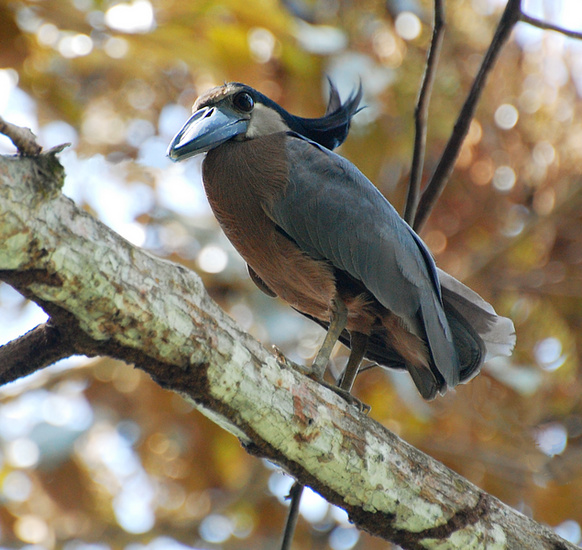
Not a photomanip, I swear to god. They really look like that.
They're nocturnal herons, thus the huge eyes. The bill is an adaptation to their diet and way of feeding. While most herons spear fish using their long, pointed bills, Boat-Billed Herons just scoop them up out of the mud, along with small crustaceans and aquatic insects.
(Continued in next post)
Carara National Park (part 2)
May 1st, 2014
There are a lot of showy birds in the rainforest. But the showiness of the Royal Flycatcher is sneaky: an exuberant multicolored peacock crest that stays hidden 99% of the time, folded up like an Asian fan into the back of the head.
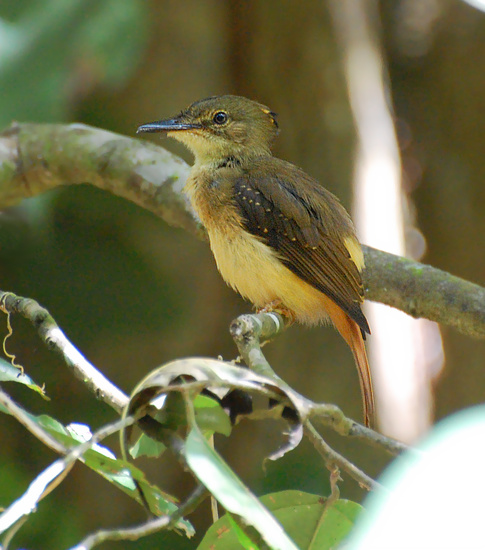
When it does unfurl, it's very much a blink-or-you-miss-it affair. The easiest way to get a good look is like this: take the bird in hand. Apparently, as discovered by bird banders and researchers, the experience of being held is startling enough to provoke a full-on display. Those of us for whom that is not an option must content ourselves with brief unphotographable glimpses, or with the fraction of the crest that sticks out when the bird preens.
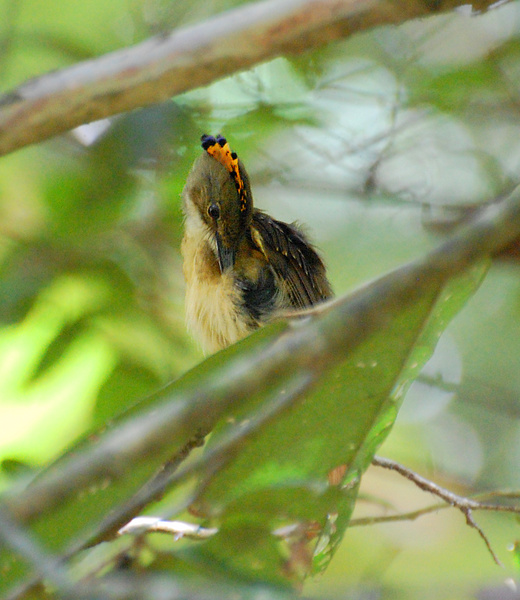
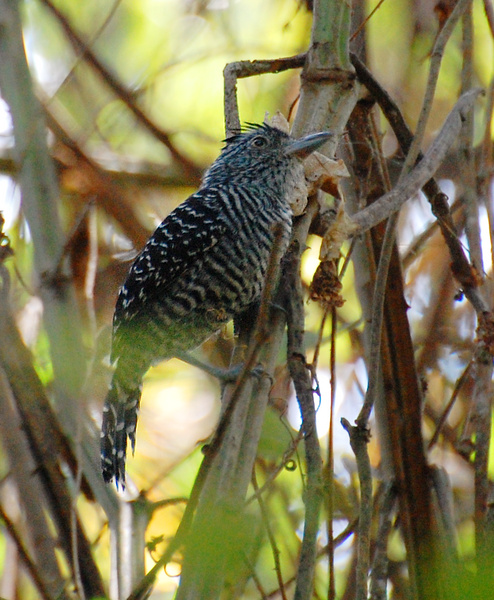
Another of the many army-ant-followers, Barred Antshrike was on my wishlist due to its striking black-and-white plumage. I saw only this one, skulking in a dense thicket. (Like so many of my successful wishlisters, I have Johan's eagle eyes to thank for it.)

I wasn't above photographing the occasional butterfly on a bird-watching tour! This one's a Red Postman, I think.
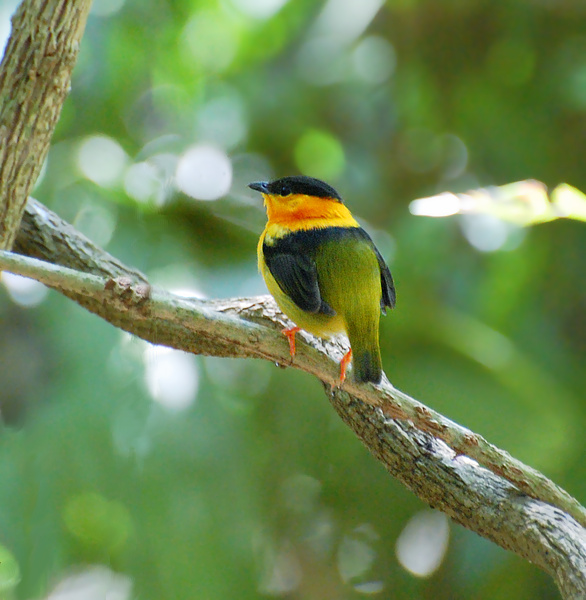
Orange-Collared Manakin
Just can't get enough of him :-)
(Continued in next post)
Carara National Park (part 1)
April 28th, 2014
On Monday, we went on our second tour with Johan Chaves: a full day in Carara National Park, one of the best birding destinations in the country. Vividly colored trogons and toucans, parrots and hummingbirds captured our eye, although comparatively few of these came within reach of my 300mm lens. This guy certainly did though:
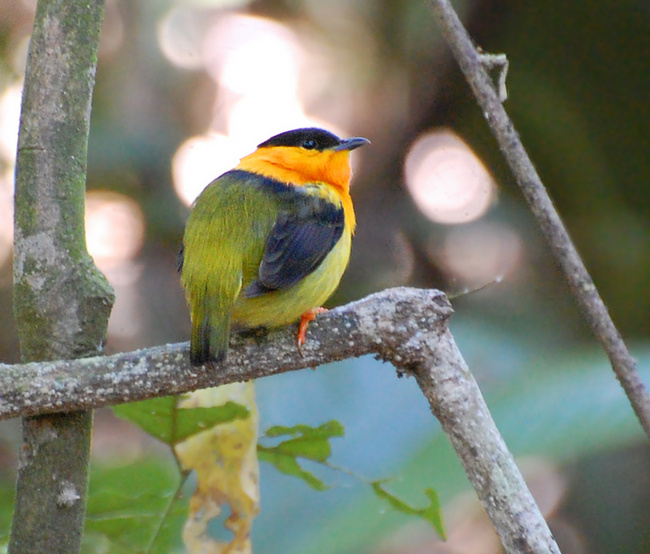
1680x1050 wallpaper
I want to make an aside here, for something I found amusing. I sometimes take my non-birder friends and family out on walks. Some of them are casual nature lovers, or if not, I can coax them in that direction. What they notice mostly is the tame, bold, inquisitive birds, and what they admire mostly is the colorful birds. They notice the adorable chickadees coming to their hands for sunflower seed. They notice the cardinals and blue jays perching in plain view, and the iridescent green of the mallards. I'm usually looking at other things, and if they can even pick out what it is I'm looking at, they might wonder what on earth is so interesting about it.
As a hard-core birder, you see so many cardinals and blue jays and chickadees that you become blase. You start focusing on the elusive birds, the wild ones, the hidden ones, above all, the rare ones. The more you bird, the more "interesting because it's rare" becomes a thing, and "boring because it's common" becomes something you fight against. (Or I fight against it, anyway. Because it's not true. They're all interesting.)
But when a temperate-zone birder visits the tropics for the first time, it's an exercise in role reversal. Now you're the one oohing and aahing over the flashy common birds, while your tour guide, who has seen them all a thousand times before, rolls his eyes discreetly. While you're going ape over toucans and macaws, he's going ape over some drab, nondescript fellow with a drab, nondescript name like Thrushlike Schiffornis or Stub-Tailed Spadebill.
You get it, because you're a birder. You empathize with his fascination with the rarity. You take a good look at the drab rare bird. But then you turn back to the Scarlet Macaws and ooh and aah some more.

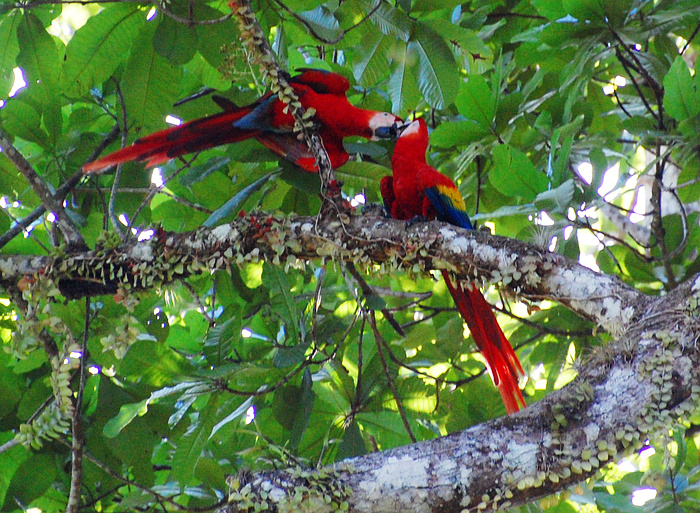
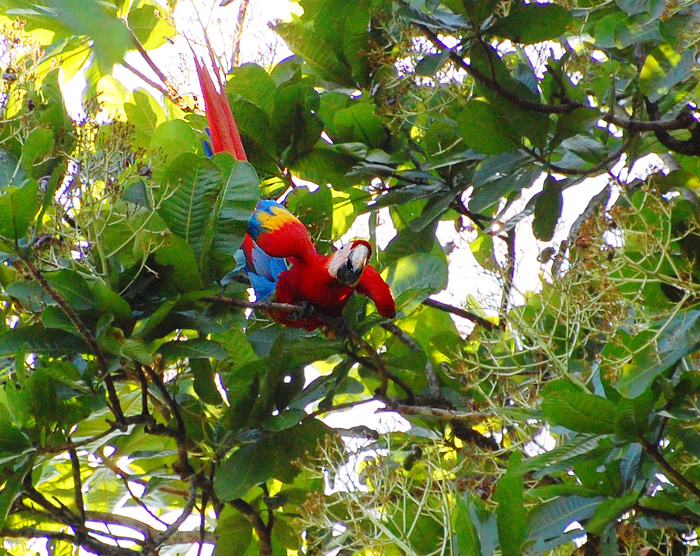
Scarlet Macaws are a highlight in any trip to Carara, one of the few places in Costa Rica where these magnificent parrots--flying rainbows, some call them--are still a common sight. Every morning they come to the park to feed. Every evening their colors streak across the sky as they migrate in pairs and flocks to their roosting grounds in the mangroves. Despite their vivid colors, you usually hear them before you see them. Their squawks carry for miles.
There were many more highlights. Orange-Collared Manakins (pictured at top) were high up on the list. Manakins are lekking birds: the brilliantly-colored males gather at special sites and put on shows for the females, who come, watch, mate if they're sufficiently impressed, and then leave to build nests and raise young alone. Every species of manakin has its own unique dance routine. Johan happened to know of a lek site. Unfortunately no females were around to spur the males on to their full performance (which involves leaping to and fro while snapping their wings like some avian version of click beetles. Have a look.) However, using a recording to convince the lek regulars that a strange male had come along, Johan was able to call one out into close view.
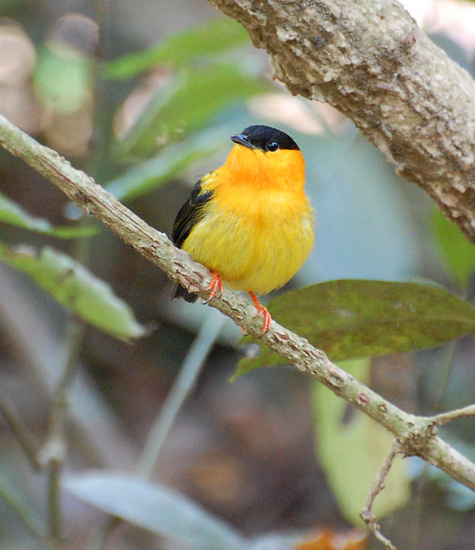
1680x1050 wallpaper
(Continued in next post)
|
